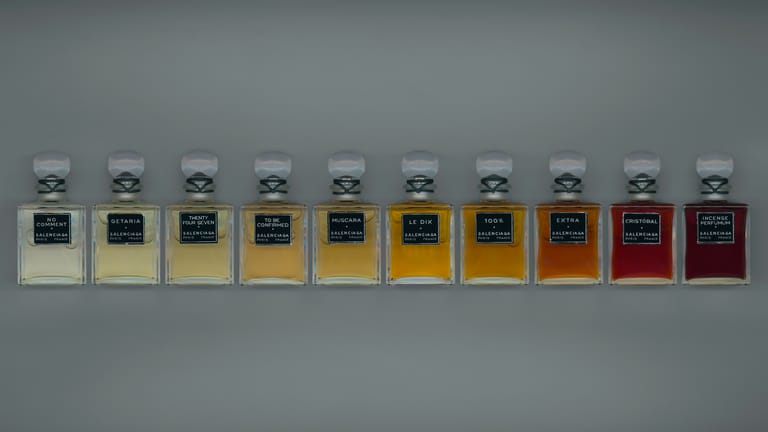Coty Navigates Transition Year as Fragrance Business Powers Growth Amid Asia’s Challenges
By
Huiyan Chen

Published on
February 20, 2025

US-based beauty giant Coty Group released its second-quarter and first-half financial results for fiscal year 2025. For the six months ending December 31, 2024, net income dropped 1 percent to $3.34 billion. However, adjusted gross margin increased by 180 basis points year over year—indicative of Coty’s strategic efforts to enhance profitability despite market pressures. CEO Sue Nabi remarked that fiscal year 2025 will be crucial for the group, marking a “transitional year.”
A week earlier, Estee Lauder also reported its second-quarter results for fiscal year 2025, revealing an operating loss of $580 million. The company simultaneously unveiled its “Beauty Reimagined” strategy, which includes plans to lay off up to 7,000 employees globally.
Coty’s quarterly results underperformed due to the ongoing weakness in Asia’s travel retail sector. The report showed that the Asia-Pacific region experienced an 11 percent year-on-year drop in net revenues, totaling $192 million, primarily impacted by the slowdown in demand from the Chinese market and tourism retail. Other beauty giants are similarly feeling the pressure. Estee Lauder also saw an 11 percent drop in sales in the Asia-Pacific market, continuing the declining trend from the previous quarter.
In the financial report, Nabi acknowledged that pressures from the Asian market led to lower-than-expected same-store sales in Q2, particularly affecting the mass beauty segment, with makeup sales declining. She noted, “While the retail performance of beauty products was strong during the holiday season, replenishment orders did not pick up accordingly, and retailers continue to maintain cautious inventory management strategies.”
The weak travel retail sector also caused a continued decline in skincare sales during the quarter. Estee Lauder reported a 12 percent decrease in net skincare sales to $1.92 billion, with volume dropping by 15 percent. Recently, L’Oréal announced the closure of all online channels for its skincare brand SHIHYO in China, making it the first brand to exit the Chinese market in 2025.
As local brands continue to rise, the demand for skincare products in China has become increasingly diversified and complex. A McKinsey report last year pointed out that while skincare accounts for 44 percent of the global beauty market, its growth in China is expected to slow or even plateau. Nabi further emphasized, “From a market perspective, China is no longer the primary driver of short-term growth in the beauty industry.”
This news underscores a profound shift in consumer preferences in China. The beauty industry is steering away from traditional segments as the fragrance sector, which accounts for just 17 percent of the global beauty business, emerges as a promising growth opportunity.

In stark contrast to the weak mass beauty segment, the fragrance business has become the growth engine for Coty Group and the beauty industry as a whole.
In the first half of fiscal year 2025, both Coty’s high-end and mass fragrance businesses achieved double-digit growth, with some core brands performing particularly well: Burberry’s fragrance line saw a 30 percent increase in sales, three times the market’s average growth rate, while the Marc Jacobs Daisy collection achieved mid-single-digit growth. In the mass fragrance segment, the Adidas Vibes collection is poised to become the most significant new launch in the group’s consumer beauty division in the past six years, contributing to double-digit year-on-year growth for Adidas fragrances in the first half.
This trend is also reflected in the global beauty market. According to Euromonitor International’s forecasts, both the mass and high-end fragrance markets will see double-digit growth in 2025. While fragrance currently represents only 5 percent of the Asia-Pacific beauty market, it holds a 17 percent share in North America and 27 percent in Europe.
With low penetration and high growth potential, fragrance—currently accounting for 60 percent of Coty’s business—has become the key to the group’s future expansion in the Asia-Pacific market. According to a report released by BeautyMatter Insights in January, Chinese consumers who focus on “value” and brand stories are increasingly turning to emerging fragrance brands with more personality and cultural depth, fueling continued growth in China’s fragrance market.
Coty has accelerated its brand diversification strategy and strengthened strategic partnerships to seize the expansion opportunities in the fragrance market. In December 2024, the group announced a long-term agreement with Swarovski, with the first fragrance scheduled for launch in 2026. Coty aims to expand its product portfolio and capture new market share.
As large beauty groups accelerate acquisitions of niche fragrance brands, Coty must focus on capturing consumer demand through targeted product rollouts and ensure it can resiliently adapt to market fluctuations to maintain its competitive edge.
Looking ahead to Coty’s financial outlook, maintaining agility will be a key priority for the group in the next phase. As the high-end beauty market stabilizes, strategies focused on price-driven growth are gradually losing effectiveness. Beauty groups must continuously innovate and leverage social media to drive trends while reducing their reliance on emerging brands.
For example, Coty’s CoverGirl brand successfully generated five times its media value (EMV) in the previous quarter through a viral marketing campaign led by influencers. The rapid response from e-commerce platforms has also proven successful for high-end beauty brands, with Burberry and Marc Jacobs both achieving double-digit growth in their online market share, demonstrating the power of digital marketing.
Meanwhile, Estee Lauder has also focused on optimizing its operational model. The company aims to reignite consumer enthusiasm and generate new growth momentum through streamlined processes and more targeted marketing strategies.

Additionally, the challenges posed by Trump’s tariff policy have compelled beauty giants like Coty and Estee Lauder to consolidate their supply chains and refine procurement processes, making adaptability essential to mitigate rising costs.
The market has reacted positively to these transformations. After announcing its layoff plan, Estee Lauder’s stock price surged, closing up 12.05 percent, signaling the capital market’s recognition and expectation of the group’s business model overhaul.
Moving forward, enhancing agility, focusing on high-end fragrances, and improving operational efficiency will be crucial for Coty to continue its global market presence and overcome challenges in the Asia-Pacific region. The “transformation battle” in the worldwide beauty industry is just beginning.












